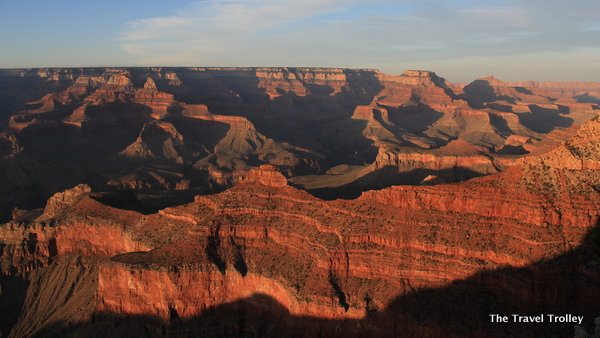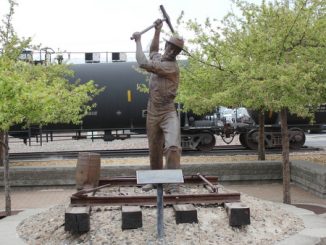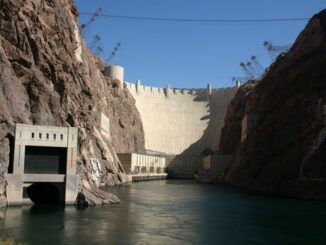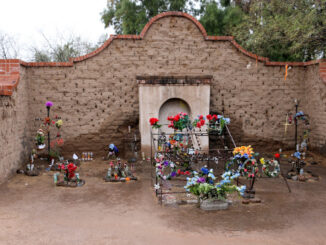
GRAND CANYON, Ariz. — There really aren’t any words to aptly describe that first glimpse of the Grand Canyon.
Massive? Mind-boggling? Grand?
All true, yet they just don’t do justice to that first experience of seeing the Grand Canyon. Words simply fail to describe the grandeur and the beauty of this one-of-a-kind natural landmark.
Carved by nature over millions of years, the sheer magnitude of the canyon is hard to fathom. It’s one of the few times where it’s better to stand and admire than it is to speak.
Trying to capture a picture of the canyon’s beauty is equally as challenging.
Maj. John Wesley Powell, a geologist and explorer, was right when he said: “The wonders of the Grand Canyon cannot be adequately represented in symbols of speech, nor by speech itself. The resources of the graphic art are taxed beyond their powers in attempting to portray its features. Language and illustration combined must fail.”
Measuring a modest 277 miles in length, there are an endless number of places to stand and gaze upon the beauty of the canyon. And, it seems, each spot is more beautiful than the one before it; it’s easy to see why the Grand Canyon is often considered one of the Seven Natural Wonders of the World.
What is truly amazing, as my wife noted, is that the canyon is always changing. It will look different each time — whether it’s the wind that reshapes the walls of the canyon or the way the sun illuminates the walls of the canyon.
In 1540, soldiers who were part of the Francisco Vasquez de Coronado expedition were the first Europeans to “discover” the Grand Canyon. García López de Cárdenas is often credited as the first European.
The canyon has attracted tourists ever since.
Powell, who led an expedition into the canyon in 1869, is credited with naming the canyon the Grand Canyon; it had been called the less imaginative Big Canyon.
“In the Grand Canyon, Arizona has a natural wonder which is in kind absolutely unparalleled throughout the rest of the world,” Theodore Roosevelt once said. “I want to ask you to keep this great wonder of nature as it now is. … You cannot improve on it. The ages have been at work on it, and man can only mar it.”
Roosevelt, who visited the Grand Canyon in 1903, designated the Grand Canyon a National Monument in 1908 (it became a National Park in 1919). The Grand Canyon, however, didn’t remain undeveloped.
In 1905, the Santa Fe railroad opened El Tovar Hotel, a stunning limestone and pine structure that is a landmark in its own right. This top-of-the-line resort was designed to cater to weary travelers who arrived at the canyon by train.
Located just feet from the South Rim of the canyon, the hotel is one of the few Harvey Houses that remains in operation.
Fred Harvey opened his first trackside eateries in 1875 in an era that predated dining cars on passenger trains. By focusing on offering high-quality food and top-notch service, the Harvey House chain revolutionized food service for train passengers.
Stepping into El Tovar Hotel is tantamount to taking a step back in time. Sitting down to eat in the former Harvey House completes the experience.
The Santa Fe operated the line from 1901 until 1974. Today, the railroad operates as a heritage tourist train between the Grand Canyon and Williams about 60 miles away.
Within walking distance of El Tovar Hotel is the Hopi House. The Fred Harvey Co. build the sandstone structure in 1904 as a market where tourists could purchase Native American crafts.
Twenty miles to the east of El Tovar Hotel is the Desert View Watchtower. Completed in 1932, Mary Colter, an interior designer and architect and an employee of the Fred Harvey Co., designed the four-story structure.
Topping out at 7,522 feet above sea level, the tower is the South Rim’s highest point and offers visitors breath-taking views of the canyon below.





